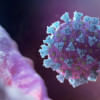Life-saving Antibiotics: Bacteria become more resistant
At least 10 types of bacteria have become more resistant to 17 life-saving antibiotics used for treating patients with various infectious diseases across the country, according to a government study.
The first of its kind in the country, the study conducted by the Institute of Epidemiology, Disease Control and Research (IEDCR) is based on laboratory analysis of the samples of 10 common bacteria collected from 14,669 patients at nine hospitals.
These antibiotics are becoming ineffective in killing the 10 types of bacteria that cause a number of diseases, including urinary tract infection, septicaemia, diarrhoea, pneumonia and wound infection, according to the findings.
For example, ceftriaxone, a widely used drug, was found ineffective in killing infectious bacteria, including E coli, proteus spp, non-typhoidal salmonella and Acinetobacter complex, in 10 to 92 percent cases.
The IEDCR conducted the study from 2017 to September this year with technical support from the US Center for Disease Control and Prevention (US-CDC), and the World Health Organization.
“It is a surveillance study; not a complete picture. However, it gives us an indication of the gravity of the situation… The threat of antibiotic resistance is growing in the country,” Dr Zakir Hossain Habib, principal scientific officer at the IEDCR, told The Daily Star.
Experts and officials from government and private organisations, and representatives from the WHO and the US-CDC attended the programme at the institute where Zakir presented the study yesterday.
Prof Mahbubur Rahman, head of the Department of Microbiology and Infectious Diseases at Gonoshasthya Medical College Hospital, said the study indicates that the overall situation is alarming.
He pointed out that some bacteria have become resistant even to several reserve group drugs, considered “the last resort” in treating patients with various infectious diseases.
For instance, one such drug, cefipime, has been found up to 89 percent ineffective against different bacteria, including E coli (55%), Klebsiella pneumoniae (61%), and Acinetobacter complex (89%), the study shows.
According to the WHO, antibiotics are classified into three groups -- “access group” used for a wide range of primary level infection, “watch group” used against higher resistance bacteria, and “reserve group” only to be used when all alternatives fail.
Besides, some watch group drugs, including imipenem, has been found 10 to 76 percent ineffective in killing several bacteria, including proteus spp (31%) and Acinetobacter complex (76%).
The IEDCR team also studied the trend of antibiotics use. It analysed 7,486 samples and found ceftriaxone to be the most commonly used drug, which was administered to 2,749 patients.
Mahbubur, former head of lab services unit at the icddr,b, said, “Once we used to advise patients to stay at hospitals until they were fully cured. Now, we don’t do so because of the risk of transmission of drug-resistant bacteria at hospitals.
“The key to stay safe is maintaining good nutrition and washing hands regularly, especially while handling patients,” he told The Daily Star.
Terming indiscriminate use of antibiotics the main reason behind the grim situation, he said, “In effect, there is no guideline on the use of antibiotics in the country. Doctors, drug producers, pharmacists and general people -- all are responsible for this.”
Speaking at the programme, Mohammed Ismail Ramzy, technical officer of essential drugs and medicine at the WHO, said, “Antibiotic resistance is a global problem…”
The study will help policy makers take the right decisions, he added.
Michael S Friedman, country director of the US-CDC, suggested three protective measures -- vaccination, WASH [water, sanitation and hygiene], and food safety to fight antibiotic resistance.
Awami League lawmaker Abdul Aziz, member of the parliamentary standing committee on health ministry, said, “Indiscriminate use of antibiotics is the problem. Doctors should consider the financial ability of the patient’s family while prescribing costly drugs.”
Prof Dr Sanya Tahmina, director (disease control) at the Directorate General of Health Services, emphasised a strong role of the media in making people aware of the indiscriminate use of antibiotics.
Prof Meerjady Sabrina Flora, director of the IEDCR, presided over the programme.

 For all latest news, follow The Daily Star's Google News channel.
For all latest news, follow The Daily Star's Google News channel. 







Comments